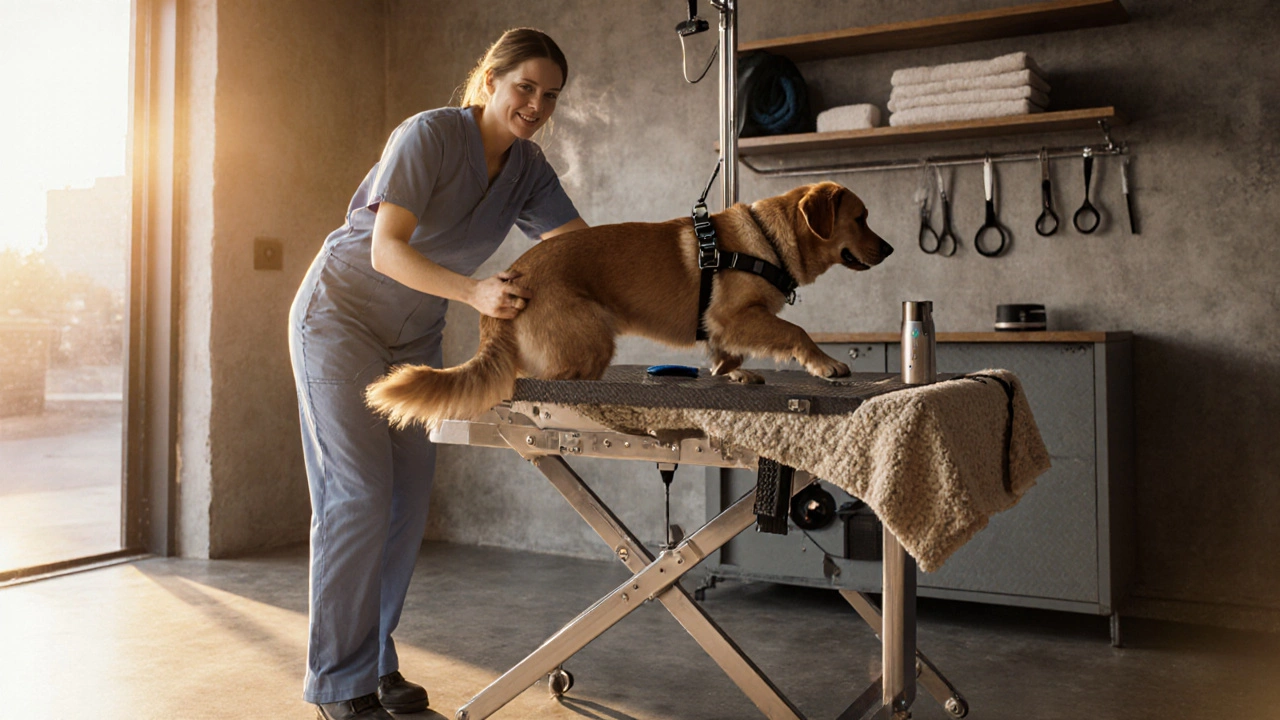Pet Pheromone Diffusers: Natural Calm for Dogs
When it comes to soothing a nervous dog, pet pheromone diffusers, devices that release synthetic versions of a dog’s calming facial pheromone (often called Dog Appeasing Pheromone or DAP) provide a chemical signal that tells the pet “everything’s okay.” Also known as DAP diffusers, they mimic the natural scent puppies emit when they feel safe with their mother. Dog calming collars, collars soaked with the same synthetic pheromone and worn close to the skin are a related tool, while pet anxiety, the stress response many dogs show in new environments, separation, or loud noises is the condition these products aim to alleviate. Veterinarians often recommend pheromone therapy, a non‑drug approach that works by influencing the limbic system as a first‑line option before medication.
How It Works, What to Expect, and When to Use It
Pet pheromone diffusers are built around three core attributes: the synthetic pheromone formula, the delivery mechanism, and the recommended usage duration. The formula typically mirrors the molecular structure of the natural DAP, ensuring the dog’s nose recognises it as a “calm” cue. Delivery comes via a plug‑in cartridge, a rechargeable plug‑in, or a battery‑powered unit that can be placed in a crate, bedroom, or travel carrier. Studies from veterinary colleges show that a steady low‑level release for at least 24‑48 hours can lower cortisol levels by up to 15 % in stressed dogs, which translates to fewer barking bouts, reduced trembling, and calmer bathroom habits. If you’re wondering whether a diffuser will replace training, the answer is no – it’s a support tool, not a replacement. Effective use pairs the diffuser with consistent behavioral training, environmental enrichment, and, when needed, veterinary guidance. For example, during fireworks or thunderstorms, plug the diffuser into the room where the dog sleeps and keep the lid closed on the cartridge to maintain concentration. If you travel, portable diffusers can fit in a suitcase and help the dog adjust to hotel rooms faster than medication alone. When choosing a product, look for three signals of quality: a clear label that lists the active A‑DAP ingredient, a warranty that covers cartridge replacement, and independent lab testing results. Cheaper versions may use generic fragrances that smell pleasant to humans but lack the specific pheromone structure, offering little calming benefit. Also, remember that not every dog responds the same way; puppies and older dogs often show the strongest reaction, while some adult dogs may need a higher concentration or a combination of diffuser and collar. Overall, pheromone therapy works best when the dog’s environment is already as stress‑free as possible – regular walks, a balanced diet, and a predictable routine set the stage for the diffuser to do its job. When those basics are in place, the diffuser becomes a subtle, invisible cue that helps your pet feel safe without any pills or harsh chemicals.
Now that you’ve got a solid grasp of what pet pheromone diffusers are, how they tie into dog calming collars, and why veterinarians trust pheromone therapy for pet anxiety, you’re ready to dive deeper. Below you’ll find a curated set of articles that cover everything from training tips to travel safety, all designed to give you practical tools for a calmer, happier dog. Browse through the collection to find specific advice that matches your situation, whether you’re dealing with a new puppy’s jitters or trying to make a flight less stressful for your four‑legged companion.
Do Dog Groomers Use Calming Aids? What You Need to Know
Explore whether dog groomers use calming aids, the types available, safety rules, and how to ensure a stress‑free grooming session for your pet.
